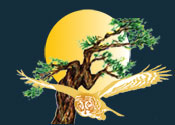Session 5 is often the most intense of the session in the Soma Structural Series. In Session 5 we focus heavily on the deep lines of connectivity up the front of the body. We continue to free the pelvis by working heavily to release everything attached to the upper portion of the pelvis and hips. This balances Session 4’s work around the bottom attachments to the pelvis and often major shifts are felt in ones posture and movement patterns. Additionally, Session 5 initiates the deepest psoas work we have experienced in the Soma Series.
We start Session 5 by working the many layers of abdominal muscles including the obliques and diaphragm. We continue by peeling away the quadriceps muscles from each other, (vastus lateralis, medialis, imtermedialis, and rectus femoris), from the top-front of the pelvis, and from the underlying femur (thigh bone). We re-work the pectineal muscles of the deep groin. We loosen the illiacus muscles which line the inside top of the pelvis and form tracks for the ever important psoas muscles where they cross forward from the spine thru the inguinal (groin) ligament at the fold of the leg.
With the pathway clear, we are able to train the psoas muscle with several intense movement exercises that show the client the importance of the vital core postural component. The client is cued to sense the multifaceted nature of the psoas as a lumbar shaper, hip hiker, leg mover and movement initiator as we proceed deeply to loosen psoas attachments along the spine and back of the deep inner leg.
Clients often begin to have a deeper sense of the importance of spinal and pelvic core connectivity after Sessions 4 and 5. With the pelvis sitting at a more neutral angle, clients often begin to notice changes in the way they stand, sit and move. Walking coaching helps to elicit awareness of the thru nature of the psoas muscle marionette strings hanging the legs from the inner spine, thru the pelvic core. The client is encouraged to explore the idea of breaking free from old posture and movement patterns that may not have been very efficient or even pain provoking, as new movement and postural cues are brought to the forefront.
|

